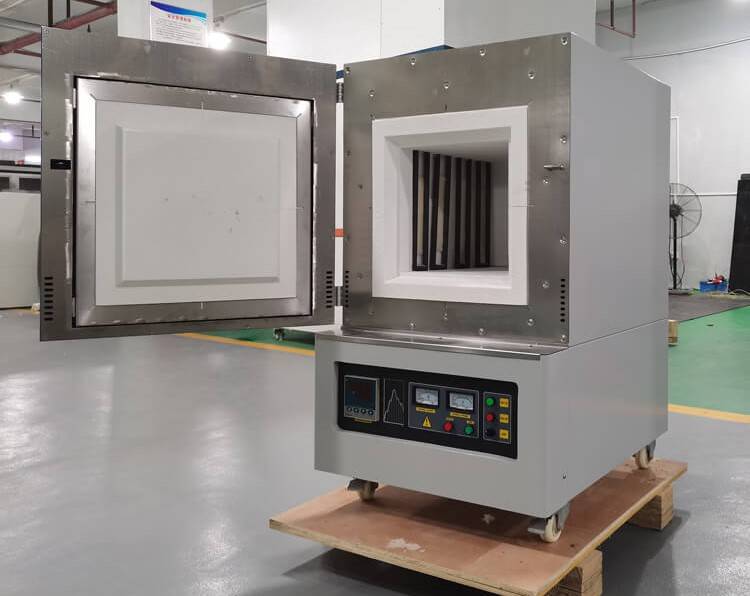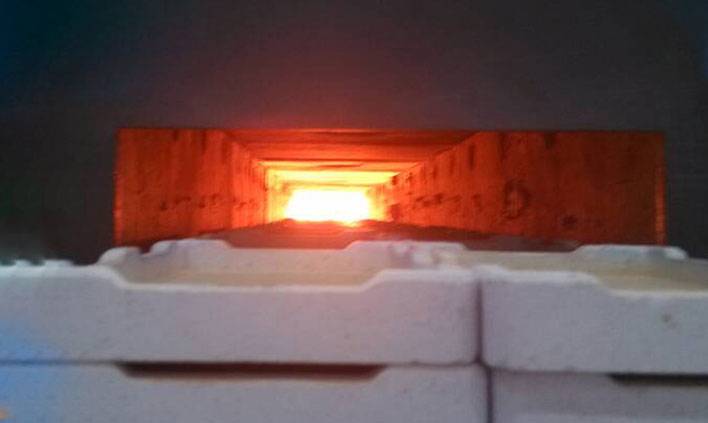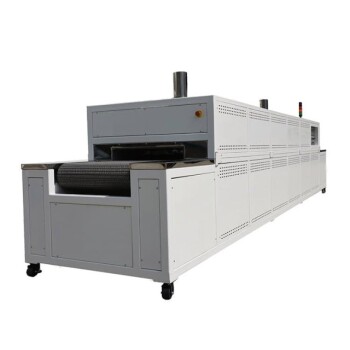Defining Experimental Needs
Heating Temperature Range
When selecting a muffle furnace, one of the first and most crucial decisions you need to make is defining the heating temperature range that aligns with your experimental requirements. This range is not just a random selection but a critical parameter that directly impacts the outcomes of your experiments.
The heating temperature range should be determined by the specific materials you are working with and the chemical or physical processes you aim to study. For instance, if you are dealing with high-temperature materials like ceramics or metals, you might need a furnace that can reach temperatures upwards of 1000°C. Conversely, lower temperature ranges, such as those around 500°C, might be sufficient for organic materials or less demanding applications.
To make an informed decision, consider the following factors:
- Material Properties: Understand the melting or decomposition points of your sample materials. This will guide you in selecting a furnace with the appropriate temperature capabilities.
- Experimental Goals: Clearly define what you aim to achieve with your experiments. Whether it's sintering, annealing, or another high-temperature process, the temperature range must support these objectives.
- Safety and Efficiency: Higher temperature ranges often come with increased safety concerns and energy consumption. Balancing these factors is essential to ensure both safety and efficiency in your experiments.
By carefully defining the heating temperature range, you set the foundation for all other aspects of your muffle furnace selection, ensuring that your equipment meets the specific needs of your experiments.

Sample Size and Heating Rate
When selecting a muffle furnace, it is crucial to consider both the sample size and the heating rate, as these factors significantly influence the performance and suitability of the furnace for specific experimental needs. Different experiments may require varying degrees of precision, speed, and capacity, which can dictate the type of muffle furnace that should be chosen.
For instance, experiments involving large sample sizes may necessitate a furnace with a larger chamber capacity to accommodate the materials without compromising heating uniformity. Conversely, smaller samples might only require a compact furnace, which can offer more precise temperature control and faster heating rates.
The heating rate is another critical parameter that directly impacts experimental efficiency and results. A faster heating rate can reduce the overall time required for experiments, thereby enhancing productivity. However, rapid heating can also introduce thermal gradients within the sample, potentially affecting the accuracy of the results. Therefore, it is essential to balance the need for speed with the requirement for consistent and accurate heating.
In summary, the selection of a muffle furnace should be guided by a thorough understanding of the experimental requirements, including the sample size and the desired heating rate. By aligning these factors with the capabilities of the furnace, researchers can ensure that their equipment meets the necessary performance standards for successful experimentation.
Choosing the Right Heating Method
Electric Filament vs. Arc Heating
When selecting a muffle furnace, one of the critical decisions is choosing the appropriate heating method. The two primary heating methods are electric filament heating and arc heating. Each method has its own set of advantages and is suited for different types of experimental needs.
Electric Filament Heating:
- Versatility: This method is highly versatile and is suitable for a wide range of experimental requirements. It is particularly effective for general laboratory applications where precise temperature control and consistent heating are essential.
- Temperature Range: Electric filament heating can typically achieve temperatures up to 1100°C, making it ideal for experiments that do not require extremely high temperatures.
- Energy Efficiency: This method is generally more energy-efficient compared to arc heating, contributing to lower operational costs and reduced energy consumption.
Arc Heating:
- High Temperature Capabilities: Arc heating is designed for specialized applications that require extremely high temperatures, often exceeding 2000°C. This makes it ideal for processes such as high-temperature melting, sintering, and other high-energy experiments.
- Rapid Heating: The arc heating method offers a rapid heating rate, which can significantly reduce the time required for experiments, thereby increasing experimental efficiency.
- Specialized Needs: While less common, arc heating is indispensable for experiments that necessitate high-energy input and extreme temperature conditions.
In summary, the choice between electric filament and arc heating depends on the specific requirements of your experiments. For most general laboratory needs, electric filament heating is the preferred option due to its versatility and energy efficiency. However, for specialized high-temperature applications, arc heating provides the necessary power and rapid heating capabilities.

Temperature Control Precision
Impact on Experimental Accuracy
The precision of temperature control in a muffle furnace is a critical factor that directly influences the accuracy of experimental results. This precision is not merely a technical specification but a fundamental determinant of the reliability of data obtained from experiments.
In general, the higher the precision of temperature control, the more accurate the experimental outcomes. This is because precise temperature control ensures that the furnace maintains a consistent and stable environment, which is essential for replicable and reliable scientific experiments. For instance, in materials science, where precise heating and cooling cycles are crucial for phase transformations, even minor fluctuations in temperature can lead to significant deviations in the final product's properties.
| Temperature Control Precision | Impact on Experimental Results |
|---|---|
| High Precision | High Accuracy, Reliable Data |
| Low Precision | Inaccurate Results, Unreliable Data |
Moreover, the impact of temperature control precision extends beyond just the consistency of results. It also affects the efficiency and cost-effectiveness of experiments. High-precision furnaces can reduce the time required for experiments, thereby lowering energy consumption and operational costs. Conversely, low-precision furnaces may necessitate more frequent recalibrations and longer experiment durations, leading to increased costs and potential delays in research progress.
In summary, the precision of temperature control in a muffle furnace is a non-negotiable aspect that every researcher must consider when selecting equipment. It is a cornerstone of experimental accuracy, efficiency, and overall success.
Heating Rate Considerations
Effect on Experimental Efficiency
The heating rate of the muffle furnace plays a pivotal role in determining the overall efficiency of experimental procedures. Generally, a faster heating rate translates to a more expeditious completion of experiments. This is particularly significant in scenarios where time is a critical factor, such as in high-throughput screening or urgent research needs.
However, the relationship between heating rate and experimental efficiency is not linear. While a rapid heating rate can indeed shorten the duration of experiments, it must be balanced against other factors such as temperature control precision and sample integrity. For instance, excessively fast heating rates might lead to uneven temperature distribution within the furnace, potentially compromising the accuracy and reliability of the results.
To illustrate this point, consider the following table that compares the time taken for experiments at different heating rates:
| Heating Rate (°C/min) | Experiment Duration (min) |
|---|---|
| 5 | 120 |
| 10 | 60 |
| 20 | 30 |
As depicted, doubling the heating rate from 5°C/min to 10°C/min reduces the experiment duration by half. Similarly, increasing the rate to 20°C/min further halves the time. This demonstrates the direct impact of heating rate on experimental efficiency.
In summary, while a faster heating rate generally enhances experimental efficiency, it is essential to consider the trade-offs with temperature control and sample integrity to ensure optimal experimental outcomes.

Safety Features
Overheating and Leakage Protection
When selecting a muffle furnace, safety should be a paramount concern due to the high temperatures generated during operation. Ensuring the furnace is equipped with robust safety features can significantly mitigate risks associated with overheating and electrical leakage.
Key Safety Features to Consider:
-
Overheating Protection: This feature is designed to prevent the furnace from surpassing safe temperature limits. It typically involves temperature sensors and automatic shut-off mechanisms that activate when the internal temperature exceeds predefined thresholds. This safeguard is crucial to protect both the furnace and the laboratory environment from potential fire hazards.
-
Leakage Protection: Electrical leakage can pose serious safety risks, including electric shock and equipment damage. Modern muffle furnaces often come with built-in leakage detection systems that monitor electrical currents and automatically disconnect the power supply if any irregularities are detected. This feature is essential for maintaining a safe working environment and prolonging the lifespan of the equipment.
By prioritizing furnaces with these advanced safety features, users can ensure a safer and more reliable experimental process.
Energy Consumption
Impact on Experimental Costs
The energy consumption of a muffle furnace is a critical factor that significantly influences the overall cost of experimental procedures. Given that these furnaces operate at high temperatures, they inherently consume a substantial amount of electricity. This high energy demand translates directly into increased operational expenses, making energy efficiency a paramount consideration during the selection process.
To mitigate these costs, it is advisable to opt for muffle furnaces that are designed with energy-saving features. These features can include advanced insulation materials, optimized heating elements, and intelligent control systems that minimize energy wastage. By choosing a furnace with lower energy consumption, researchers can effectively reduce the long-term operational costs associated with their experiments.
Moreover, the initial investment in a more energy-efficient muffle furnace can lead to substantial savings over its lifespan. While the upfront cost might be higher compared to less efficient models, the cumulative savings in electricity bills can offset this difference, making energy-efficient models a financially prudent choice.
In summary, while the energy consumption of a muffle furnace is an unavoidable aspect of its operation, selecting a model with superior energy efficiency can significantly lower the experimental costs, making it a strategic decision for any laboratory setting.

Brand Selection
Importance of Brand Reputation
When navigating the diverse landscape of muffle furnaces available on the market, discerning buyers must recognize the critical role that brand reputation plays in ensuring product reliability and performance. The sheer variety of brands offering these essential laboratory instruments means that quality can vary significantly, making it imperative to select a reputable brand.
A well-known brand often signifies a history of delivering high-quality products, backed by rigorous testing and consistent performance. Such brands are typically more likely to adhere to industry standards and offer superior after-sales support, which can be crucial for maintaining the longevity and efficiency of your muffle furnace.
Moreover, choosing a brand with a strong reputation can mitigate risks associated with product defects or operational issues. Brands that have established themselves in the market are usually more responsive to customer feedback and are better equipped to address any concerns that may arise post-purchase. This not only ensures a smoother operational experience but also contributes to the overall success of your experiments by providing a dependable tool.
In summary, while the initial cost of purchasing a muffle furnace from a reputable brand may be higher, the long-term benefits in terms of reliability, safety, and support can far outweigh the initial investment. Therefore, prioritizing brand reputation is a strategic decision that can significantly enhance the quality and consistency of your experimental outcomes.
Price Considerations
Balancing Cost and Quality
The price of a muffle furnace can fluctuate significantly based on several key factors, including brand reputation, performance capabilities, and the array of features it offers. When budgeting for a muffle furnace, it's crucial to strike a balance between cost and quality to ensure that the chosen model meets both your immediate needs and long-term expectations.
| Factor | Impact on Price | Consideration |
|---|---|---|
| Brand Reputation | High | A well-known brand often signifies reliability and superior after-sales support. |
| Performance | Medium to High | Higher performance typically correlates with more advanced features and better efficiency. |
| Features | Medium | Additional features like automated controls, safety mechanisms, and energy-saving technologies can increase the price. |
In the process of selecting a muffle furnace, it is essential to align your budget with the specific requirements of your experiments. For instance, if your experiments necessitate precise temperature control and rapid heating rates, investing in a higher-end model with superior performance metrics may be justified. Conversely, for basic heating needs, a more economical option might suffice.
Moreover, considering the long-term operational costs is equally important. While a lower-priced furnace might seem attractive initially, its higher energy consumption or frequent maintenance needs could offset any savings over time. Therefore, evaluating the total cost of ownership, including energy efficiency and potential maintenance expenses, is a prudent step in the selection process.
By carefully weighing these factors, you can make an informed decision that optimizes both your budget and the quality of your experimental outcomes.

After-Sales Service
Importance of Warranty and Maintenance
When selecting a muffle furnace, it's crucial to consider the manufacturer's after-sales service policy. Despite meticulous care, muffle furnaces may encounter issues during operation, making after-sales support indispensable. Understanding the warranty and maintenance services offered can significantly impact your long-term satisfaction and the overall cost of ownership.
Key Aspects to Consider:
-
Warranty Coverage:
- Duration: Look for warranties that cover a substantial period, typically ranging from one to five years.
- Scope: Ensure the warranty includes parts and labor, and understand any exclusions or limitations.
-
Maintenance Services:
- Routine Maintenance: Some manufacturers offer scheduled maintenance plans to ensure your furnace operates optimally.
- Emergency Repairs: Access to quick repair services can minimize downtime and prevent costly interruptions to your experiments.
-
Customer Support:
- Availability: Ensure the manufacturer provides 24/7 customer support for any urgent issues.
- Response Time: Fast response times can be critical in maintaining experimental continuity.
By carefully evaluating these factors, you can make a more informed decision, ensuring that your muffle furnace not only meets your experimental needs but also comes with reliable support for any future challenges.
Related Products
- 1700℃ Muffle Oven Furnace for Laboratory
- 1400℃ Muffle Oven Furnace for Laboratory
- 1200℃ Muffle Furnace Oven for Laboratory
- 1800℃ Muffle Oven Furnace for Laboratory
- 1700℃ Controlled Atmosphere Furnace Nitrogen Inert Atmosphere Furnace
Related Articles
- Beyond 1000°C: How Precision Furnaces Conquer the Hidden Enemy of Repeatable Results
- The Geometry of Heat: Deciding Between Capacity and Control in Lab Furnaces
- Comprehensive Guide to Muffle Furnaces: Applications, Types, and Maintenance
- Muffle Furnace: Unraveling the Secrets of Uniform Heating and Controlled Atmosphere
- How to Choose Right Muffle Furnace for Your Laboratory?





















